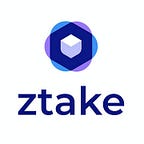How to Choose Cosmos Validator
🤔🤔🤔🤔🤔🤔🤔
We know you have probably been through dozens of articles and tweets about what Cosmos is and why its’ launch is so important. This particular article won’t be talking you through all of that again. If you haven’t read anything start here.
Let’s cut right to the chase with this one! It is crucial to note, that Cosmos places the responsibility of choosing a validator and performing due diligence on delegators. So it is on you to make the right choice.
Many of you would ask: With so many Cosmos Validators out there (84 active block producing validators at the moment), how are you supposed to decide on a very best one? 👨🚀👩🏿🚀👩🏻🚀 In the end, there is not enough data on past performance to derive any analytics from. Our team at ztake.org decided to compile a Selection Criteria Checklist that could be a good starting point in your research as well as add some structure to it. Please note, however, that this is by no means an exhaustive list, there may be errors and elements of it are subject to opinion.
Here is the list we came up with:
- Technical setup of the node
- Amount of self-bonded Atoms
- Current Commission rate, as well as commission change rate and maximum commission
- Total amount and number of delegations
- Community Involvement and Longevity
- The level of network decentralization
This list most likely will be revised in the future. In the meantime, we encourage you to comment here if you feel something should be changed, added or removed.
Technical setup of the node
This evaluation is the hardest thing to do as it requires at least some level of technical expertise. Moreover, this information is not always readily available on the validators website and/or structured in the different formats. In this case, we encourage you, reaching out directly to validators to get more details. Some things that you should pay particular attention to:
- Is the software run on a physical server or in a cloud? (Listen carefully for the reasons why the operator choose one over the other)
- How is validator private key secured? Do they use a hardware security module (HSM)? How about the Key Management Service (kms)?
- Do they have a reliable way to restart the node if the software or hardware fails?
- How are they making sure double-signature doesn’t occur?
- What will happen if the node is censored or under the network attack?
Chris Remus also recommends checking if a validator node is shielded behind a layer of private and public sentries. This type of set up is recommended by the community to protect the node against malicious blocks and network attacks. You could also ask for URLs of public sentries to act as proof of their existence.
Amount of self-bonded Atoms
This is a definitive factor that will provide a clear picture of how serious the validator is and how much skin in they’ve got in the game. Attention! This criterion is not relevant until transfers are enabled by a governance vote, software upgraded and exchanges add Atom trading support.
Current Commission rate, as well as commission change rate and maximum commission
Commission rate is the percentage of your reward that will be auto-allocated to the validator. Low commission means more reward for you but it could also be an indicator of a low operational cost that often times equals to weaker security. Commission rate could be updated by validator once a day for a maximum amount specified until the max-rate is reached. Keep that in mind. If you want to delegate stake and forget it, pay attention to maximum validator commission.
Total amount and number of delegations
This criterion shouldn’t come up as a surprise to anyone as it is one of the most intuitive things to do — delegate to a validator with a higher amount of stake to maximize the reward. But remember that those nodes are a better target for attackers.
Community Involvement and Longevity
Community Involvement is hard to measure for people not involved in cosmos on a day to day basis but should still be taken into account. The easiest way to answer these metrics is to look where validators commission money will be spent. Do validators plan to invest in the ecosystem by building tools, apps or dApps and/or doing some research? In other words, check if validator cares about the long-term success of the network and not in a validator business just because of money.
Longevity is also a good factor to consider. There are validators who has been actively operating a testnet node for over a year. Those who did actively participated in bug discovering, tweaking configs and contributed to overall readiness of the system.
The Level of Network Decentralization
This is the last and most controversial criteria. Supporting smaller validators might look at a bigger risk and would definitely result in a smaller reward. However, if the network becomes dangerously centralized the overall value of the cosmos network and its’ staking token will go down. It will also expose the network to a higher risk of potential double-spending attack.
*******************************************************************
Having set all of the above, we strongly recommend each individual to perform their own research and mitigate the risk by spreading delegations among multiple node providers. Staking also involves a high degree of risk and there is always the possibility of loss, including the loss of all staked digital assets.
